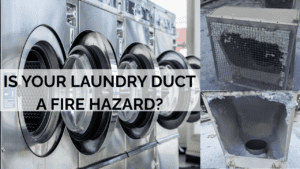[vc_row][vc_column][vc_column_text]Every year we hear alarming figures about the impact of the flu virus and warned of the increased risk during the winter months. Often underestimated, flu is a serious infection that can be fatal and cause mass disruption to schools, especially if an outbreak occurs.
In 2019, over 60 schools across the North East were forced to close due to symptoms of flu and Norovirus, causing mass disruption across the region. This isn’t uncommon, in recent years, hundreds of schools across the country have faced closure due to the impact of seasonal infections ripping through schools at a distressing rate.
This Winter, health experts have warned of an even bigger risk to the public, as schools face a triple threat of infections. Cases of the flu, Covid-19 and the Norovirus are beginning to spread rapidly amongst Brits who have weaker immune systems due to the recent government lockdowns.
Schools are the ideal environments for these bugs to thrive due to large numbers of children in close contact, causing a rise in infection rates and an increase in staff and pupil absences.
With the risk of a bleak Winter ahead, we take a look at how infection control can keep staff and students safe and in school during the sick season.[/vc_column_text][vc_column_text]
The true impact of flu season on school children
Due to their developing immune systems, children are considered an at risk group and are also found to be prolific spreaders of flu. Although a staggering 6.5 million children in the UK are vaccinated against flu, they can still contract the virus and suffer symptoms, such as headaches, sore throats, vomiting and coughing – leading to increased absences from school.
With an estimated 23,000 nursery and primary school facilities in the UK caring for millions of children at risk of contracting the flu, the impact of an outbreak could be catastrophic. Young children could face significant absences from education while suffering with the symptoms of an acute infection.[/vc_column_text][vc_column_text]
What is infection control?
Infection control is essentially the systems and measures in place used to prevent and restrict the spread of infectious diseases such as flu, Norovirus or Covid-19.
Some standard precautions for infection control can reduce the spread of viruses, such as hand washing, mouth coverings and opening windows, however the solution isn’t fool proof and there is still a high risk of infection cases spiking. Implementing systems that can identify, treat and prevent harmful diseases through the use of Ultraviolet Germicidal Irradiation (UVGI) technology ensures the staff and children in your care are protected, whilst the burden on staff to implement basic infection prevention measures is reduced.[/vc_column_text][vc_column_text]
The consequences for schools with no infection control
As we found with Covid-19, once a positive case of a highly infectious disease is identified within a school it can quickly spread amongst staff and students. This is similar to other diseases such as Norovirus and the flu.
Research has found that teaching is one of the top professions that miss work due to sickness, on average taking 0.39 days a month off. Schools have also been named as one of the germiest workplaces, with a higher risk of them contracting respiratory illnesses than other professions.
Consistent staff absences in schools not only puts pressure on the existing team, as they work to plug the gaps, but it can also have a significant impact on pupils’ learning experience and results. The biggest impact on a pupil’s success is their teacher, so if children are exposed to different teachers it can have a serious impact on the relationship they have with their teacher as well as the grades they achieve. Consistent teacher absences can also have a negative financial impact on the school, as they face additional costs to recruit agency staff.
With a spike in infectious diseases in the Winter, pupils also take more time away from school. Last Winter the absence rate across schools in the UK was 4.7% equating to over 22 million sick days, on average three days per pupil during the Autumn term. In comparison with the Spring term the absence rate was significantly lower at 3.3%, a reduction of 10 million sick days.
These staggering figures showcase an alarming increase of pupil absences during Winter where infectious diseases are rife in school settings. Studies have found that higher overall pupil absence leads to lower attainment at KS2 and KS4, which shows the damaging consequences of high infection rates across the UK’s educational facilities.[/vc_column_text][vc_column_text]
Absences in schools
Severe symptoms coupled with strict policies on returning to school after infections, can cause children to miss large portions of their education, especially during the Autumn terms when a number of infectious diseases are on the rise.
While there has been an unprecedented year of absences for both staff and pupils in schools due to Covid-19, other infectious diseases have also been silently increasing. Norovirus outbreaks have tripled in the last five years, resulting in staff and pupils taking a minimum of two days off school according to official guidance.[/vc_column_text][vc_column_text]
Creating a safer environment for school communities using infection control
An effective infection control policy is key for reducing the number of staff and pupil absences, protecting your school community’s health and limiting the negative impact of infectious outbreaks.
UVGI technology is proven to treat, prevent and inactivate the growth of harmful microbes, including airborne viruses, bacteria, spores, moulds, yeast and fungi, in a matter of minutes.
Ineffective ventilation can also result in airborne viruses, such as the flu, spreading throughout school classrooms. With a good ventilation system and infection control strategy in place, schools can reduce the spread of infectious diseases and create an environment conducive to health and wellbeing.
Plasma Clean uses intelligent indoor air quality sensors and UVGI technology to create cleaner and safer educational spaces. With over 13 years experience within the industry, they carefully measure indoor air quality levels in your educational facility before analysing the data and recommending a bespoke solution to implement to protect your staff and pupils.
By creating a cleaner and safer school environment it can also benefit staff and pupils by supporting general wellbeing and helping to increase pupil productivity and concentration.
Prevent, control and stop the spread of airborne viruses in your school environment with Plasma Clean. Contact us at [email protected].[/vc_column_text][/vc_column][/vc_row]








